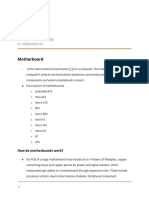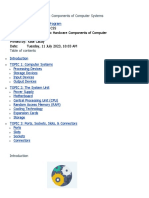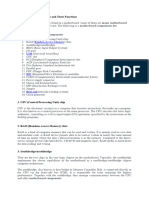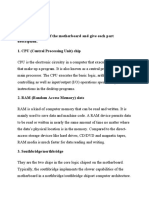0% found this document useful (0 votes)
34 views7 pagesFundamentals of Computer Hardware Unit1
The document covers the fundamentals of computer hardware, detailing components such as input/output devices, the CPU, memory, storage, and the motherboard. It explains BIOS and Flash BIOS, different motherboard types, bus architectures, power supplies, and the significance of grounding for safety and device protection. Overall, it provides a comprehensive overview of essential hardware concepts and components.
Uploaded by
roshankumar52717Copyright
© © All Rights Reserved
We take content rights seriously. If you suspect this is your content, claim it here.
Available Formats
Download as PDF, TXT or read online on Scribd
0% found this document useful (0 votes)
34 views7 pagesFundamentals of Computer Hardware Unit1
The document covers the fundamentals of computer hardware, detailing components such as input/output devices, the CPU, memory, storage, and the motherboard. It explains BIOS and Flash BIOS, different motherboard types, bus architectures, power supplies, and the significance of grounding for safety and device protection. Overall, it provides a comprehensive overview of essential hardware concepts and components.
Uploaded by
roshankumar52717Copyright
© © All Rights Reserved
We take content rights seriously. If you suspect this is your content, claim it here.
Available Formats
Download as PDF, TXT or read online on Scribd
/ 7


























































